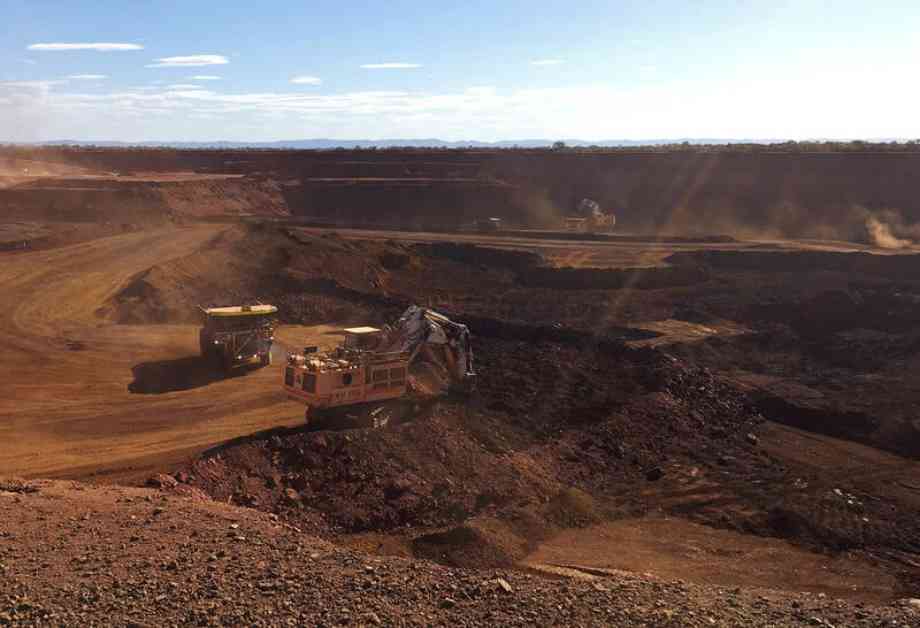China’s Steel Industry Struggles Amidst Global Supply Concerns
China’s steel industry is facing a crisis as iron ore prices hit their lowest point since 2022. The market is worried about a potential oversupply exceeding demand, leading to a significant downturn in the prices of iron ore. Major mining companies have increased their exports, exacerbating the challenges faced by Chinese steel manufacturers.
According to reports from Bloomberg, iron ore prices in Singapore have been on a downward trend for four consecutive days, dropping below $94 per metric ton. The steel production data released by China on Thursday may indicate a decline in output. As China is the largest customer for seaborne iron ore, its fluctuating demand directly impacts the global market.
Iron ore has experienced one of the largest declines among commodities this year, with benchmark prices falling by approximately one-third. China Baowu Steel Group, the world’s largest steel producer, recently issued a warning about the severe crisis facing the Chinese steel industry due to plummeting product prices. This situation highlights the challenges faced by steel mills in China.
Despite efforts by Chinese officials to address the ongoing issues in the real estate sector amidst economic slowdown, the crisis has severely impacted steel demand. The futures for iron ore in Singapore saw a 1.9% decline in early trading on the 15th, dropping to $93.85 per metric ton, the lowest intraday price since November 2022. Subsequently, prices rebounded, fluctuating around $95 per metric ton and recording a 1.1% decrease by 10:55 am to $94.60 per metric ton. This wave of selling has also significantly affected mining stocks, with mining giant BHP’s shares traded in Australia falling by over 20% this year.
The Impact of Economic Slowdown on China’s Steel Industry
The economic slowdown in China has had ripple effects across various sectors, including the steel industry. While Chinese officials are grappling with the challenges in the real estate market, the steel industry is experiencing a sharp decline in demand. The oversupply of steel products coupled with weakening prices has put immense pressure on steel manufacturers in China.
China’s steel production data, set to be released, is anticipated to reflect a decrease in output. This decline comes at a time when global supply chains are facing disruptions, with major mining companies ramping up their exports. The interconnected nature of the global economy means that fluctuations in China’s steel industry can have far-reaching implications.
As iron ore prices continue to plummet, the profitability of steel mills in China is being severely impacted. The warning issued by China Baowu Steel Group underscores the seriousness of the situation, highlighting the urgent need for measures to address the crisis. With iron ore futures showing volatility and mining stocks taking a hit, the challenges faced by the steel industry are becoming more pronounced.
Strategies for Resilience in the Chinese Steel Market
Amidst the crisis facing the Chinese steel industry, stakeholders are exploring strategies to navigate the challenging landscape. With iron ore prices at their lowest in years, it is imperative for steel manufacturers to adapt to the changing market dynamics. Enhancing operational efficiency, exploring new markets, and diversifying product offerings are some strategies that can help steel mills weather the storm.
Collaboration between industry players, government intervention, and technological advancements are also crucial in building resilience in the steel sector. By fostering innovation and embracing sustainable practices, Chinese steel manufacturers can position themselves for long-term success. The current crisis serves as a wake-up call for the industry to reevaluate its strategies and embrace change.
In conclusion, the crisis in China’s steel industry underscores the interconnectedness of global supply chains and the impact of economic slowdown on various sectors. As iron ore prices hit record lows, steel manufacturers are facing unprecedented challenges that require swift action and innovative solutions. By adopting a proactive approach and leveraging opportunities for growth, the Chinese steel industry can overcome the current crisis and emerge stronger in the long run.












